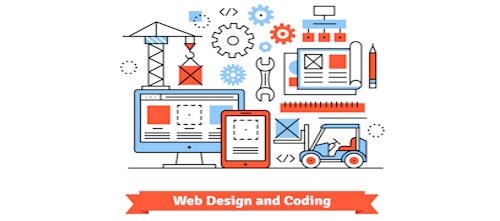WordPress, the ubiquitous content management system (CMS) powering over 43% of all websites, is far from stagnant. While its core principles of user-friendliness and extensibility remain, the platform is constantly evolving to meet the demands of a rapidly changing digital landscape. From the rise of AI to the shift towards headless architectures, the future of WordPress is being shaped by a confluence of exciting trends and powerful technologies. Understanding these developments is crucial for developers, businesses, and anyone relying on WordPress to maintain a competitive edge. This article will delve into the key factors influencing WordPress’s trajectory, providing insights into what the future holds for this dominant platform.
Emerging Trends Shaping WordPress’s Evolution
The evolution of WordPress is driven by several key trends, reflecting broader shifts in web development and user expectations. One of the most significant is the continued emphasis on user experience (UX). This goes beyond simple aesthetics; it encompasses site speed, accessibility, and intuitive navigation. Google’s Core Web Vitals, which measure page loading speed, interactivity, and visual stability, have become critical ranking factors, forcing WordPress developers and site owners to prioritize performance optimization. Themes and plugins are increasingly designed with these metrics in mind, and tools like Google PageSpeed Insights are becoming indispensable for WordPress management.
Another crucial trend is the rise of no-code/low-code development. While WordPress has always been relatively user-friendly, the demand for even simpler website creation and customization is growing. Page builders like Elementor, Beaver Builder, and the native Gutenberg editor are constantly evolving to provide more drag-and-drop functionality, pre-built templates, and intuitive design controls. This empowers non-developers to create and manage sophisticated websites without needing to write extensive code, democratizing web development and allowing businesses to iterate faster.
The growing importance of accessibility is also shaping WordPress’s future. Websites need to be usable by everyone, regardless of disability. This includes considerations for users with visual impairments, motor limitations, cognitive disabilities, and more. The WordPress Accessibility Team is actively working to improve the platform’s core accessibility, and developers are increasingly focusing on creating themes and plugins that adhere to WCAG (Web Content Accessibility Guidelines) standards. This is not only ethically important but also legally mandated in many jurisdictions, making accessibility a non-negotiable aspect of modern WordPress development.
Finally, e-commerce integration continues to be a major trend. WordPress, through plugins like WooCommerce, has become a dominant force in online retail. WooCommerce itself is constantly evolving, adding features like improved inventory management, multi-channel selling capabilities, and enhanced payment gateway integrations. The rise of subscription-based business models and the increasing demand for personalized shopping experiences are also driving innovation in WordPress e-commerce solutions. According to BuiltWith, WooCommerce powers over 28% of all online stores, highlighting its significant presence in the e-commerce landscape.
Key Technologies Driving WordPress Innovation
Several core technologies are underpinning the advancements in WordPress, enabling new features and functionalities. One of the most important is JavaScript frameworks, particularly React. The Gutenberg editor itself is built on React, and this trend is extending to other areas of WordPress development. React allows for the creation of dynamic and interactive user interfaces, improving the editing experience and enabling more sophisticated front-end features. This shift towards JavaScript-heavy development requires WordPress developers to adapt and acquire new skills.
PHP, the server-side scripting language at the heart of WordPress, continues to evolve. Newer versions of PHP offer significant performance improvements and enhanced security features. Staying up-to-date with the latest PHP versions is crucial for maintaining a fast, secure, and efficient WordPress website. The WordPress core team actively encourages users to upgrade to supported PHP versions, and hosting providers are increasingly phasing out support for older, less secure versions.
APIs (Application Programming Interfaces) are also playing a crucial role in WordPress innovation. The WordPress REST API allows developers to interact with WordPress data from external applications, enabling the creation of custom integrations, mobile apps, and headless WordPress setups. This opens up a world of possibilities for extending WordPress beyond its traditional role as a monolithic CMS. The REST API is a cornerstone of the headless WordPress movement, which we’ll explore in more detail later.
Finally, cloud hosting is becoming increasingly prevalent in the WordPress ecosystem. Cloud platforms like Amazon Web Services (AWS), Google Cloud Platform (GCP), and Microsoft Azure offer scalability, reliability, and performance benefits that traditional hosting solutions often struggle to match. Managed WordPress hosting providers are leveraging these cloud platforms to provide optimized hosting environments specifically tailored for WordPress, simplifying deployment and management for users. This trend towards cloud hosting is driven by the need for greater flexibility and resilience in the face of fluctuating traffic and evolving website demands.
The Impact of AI and Machine Learning on WordPress
Artificial intelligence (AI) and machine learning (ML) are poised to revolutionize many aspects of WordPress, from content creation to security. One of the most immediate applications is in content generation and optimization. AI-powered tools can assist with writing blog posts, generating product descriptions, creating social media updates, and even optimizing existing content for search engines. These tools can analyze text for readability, keyword density, and SEO best practices, helping users create more engaging and effective content.
AI is also transforming website security. Machine learning algorithms can be used to detect and prevent malicious attacks, such as brute-force login attempts, SQL injection, and cross-site scripting (XSS). AI-powered security plugins can analyze website traffic in real-time, identify suspicious patterns, and automatically block malicious actors. This proactive approach to security is becoming increasingly important as cyber threats become more sophisticated.
Personalization is another area where AI is making a significant impact. AI-powered plugins can analyze user behavior, preferences, and demographics to deliver personalized content, product recommendations, and user experiences. This can lead to increased engagement, higher conversion rates, and improved customer satisfaction. For example, an e-commerce site could use AI to recommend products based on a user’s past purchases or browsing history.
Finally, AI is being used to improve website accessibility. AI-powered tools can automatically generate alt text for images, transcribe audio and video content, and even adapt website layouts to better suit users with specific disabilities. This helps to make websites more inclusive and accessible to a wider audience, aligning with the growing emphasis on web accessibility standards. While the full potential of AI in WordPress is still being explored, it’s clear that it will play a major role in shaping the platform’s future.
WordPress in the Era of Headless and Composable Architectures
The traditional WordPress architecture, where the front-end (what users see) and back-end (where content is managed) are tightly coupled, is being challenged by the rise of headless and composable architectures. Headless WordPress separates the content repository (WordPress) from the presentation layer (the front-end). This means that WordPress is used solely as a content management system, and the front-end is built using a separate technology, such as React, Vue.js, or Next.js. The WordPress REST API, or increasingly GraphQL, is used to fetch content from WordPress and display it on the front-end.
This decoupling offers several advantages. It allows for greater flexibility and customization of the front-end, enabling developers to create unique and highly performant user experiences. It also improves scalability and performance, as the front-end can be optimized independently of the WordPress back-end. Furthermore, it enhances security by reducing the attack surface, as the WordPress installation is not directly exposed to the public.
Composable architectures take this concept a step further. Instead of relying on a single monolithic CMS, a composable architecture combines multiple best-of-breed services, each handling a specific function. For example, WordPress might be used for content management, while a separate service handles e-commerce, another handles search, and another handles user authentication. These services are connected via APIs, creating a highly flexible and scalable system.
The shift towards headless and composable architectures represents a significant paradigm shift for WordPress. It requires developers to acquire new skills in front-end frameworks and API integration. However, it also opens up new possibilities for creating innovative and highly performant web experiences. While traditional WordPress will continue to be a viable option for many users, headless and composable architectures are likely to become increasingly popular for larger, more complex projects, and for businesses seeking greater control and flexibility over their digital presence. Companies like WP Engine and Pantheon are already offering specialized hosting and tooling to support headless WordPress deployments, indicating the growing market demand for this approach.
The future of WordPress is dynamic and multifaceted. Driven by evolving user expectations, emerging technologies, and a vibrant community, WordPress is adapting to remain a relevant and powerful platform for years to come. From the continued emphasis on user experience and accessibility to the transformative potential of AI and the rise of headless architectures, the trends and technologies discussed in this article are shaping a new era for WordPress. Embracing these changes, acquiring new skills, and staying informed about the latest developments will be crucial for anyone involved in the WordPress ecosystem to thrive in this exciting future.

